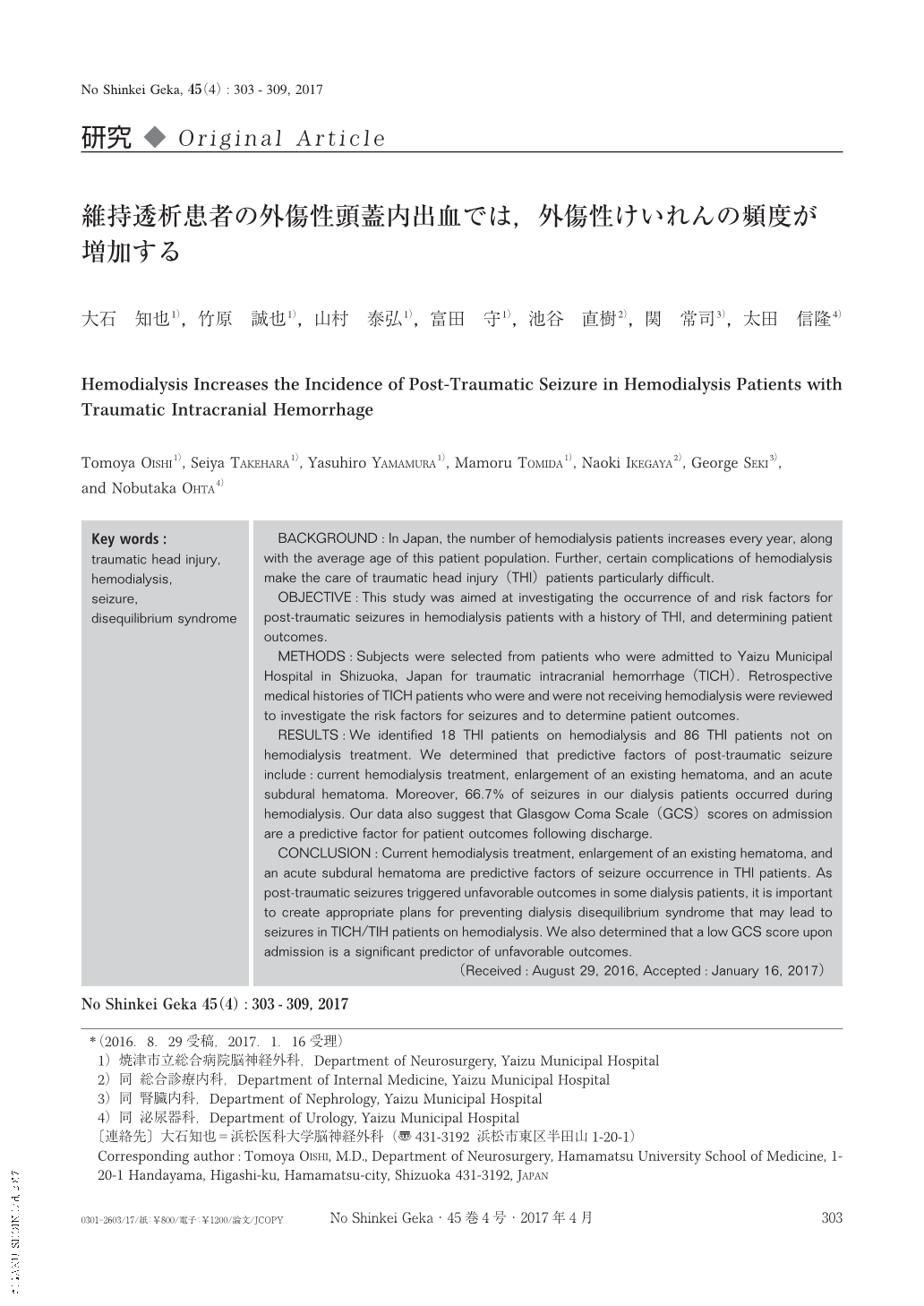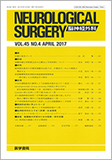Japanese
English
- 有料閲覧
- Abstract 文献概要
- 1ページ目 Look Inside
- 参考文献 Reference
Ⅰ.背 景
本邦における維持透析患者数は増加傾向で,特に65歳以上の年齢層での増加に伴い,維持透析患者全体の平均年齢も上昇している4,8).また一方で,年齢の影響や維持透析患者特有の易転倒性のため3,10,15),頭部外傷を起こしやすく,透析患者の頭部外傷管理を少なからず経験するようになっている.
頭部外傷において維持透析は転帰不良因子であるとの報告があり,既存の合併症なども重なり管理に難渋することが多く6,12),特に血液透析の場合は血腫増大の問題だけでなく,不均衡症候群などによる脳浮腫の増悪により頭蓋内に影響を及ぼすことが知られている.頭蓋内圧亢進やけいれん重積の管理に苦慮し不良な転帰となった報告もあるが5,7,9),透析患者における頭部外傷の管理に関しては詳しい指針がないのが現状である.
本研究では,頭部外傷管理におけるけいれん発作出現および転帰に与える因子について,維持透析患者と維持透析を行っていない患者との間で比較・検討し,維持透析患者における頭部外傷の管理について考察する.
BACKGROUND:In Japan, the number of hemodialysis patients increases every year, along with the average age of this patient population. Further, certain complications of hemodialysis make the care of traumatic head injury(THI)patients particularly difficult.
OBJECTIVE:This study was aimed at investigating the occurrence of and risk factors for post-traumatic seizures in hemodialysis patients with a history of THI, and determining patient outcomes.
METHODS:Subjects were selected from patients who were admitted to Yaizu Municipal Hospital in Shizuoka, Japan for traumatic intracranial hemorrhage(TICH). Retrospective medical histories of TICH patients who were and were not receiving hemodialysis were reviewed to investigate the risk factors for seizures and to determine patient outcomes.
RESULTS:We identified 18 THI patients on hemodialysis and 86 THI patients not on hemodialysis treatment. We determined that predictive factors of post-traumatic seizure include:current hemodialysis treatment, enlargement of an existing hematoma, and an acute subdural hematoma. Moreover, 66.7% of seizures in our dialysis patients occurred during hemodialysis. Our data also suggest that Glasgow Coma Scale(GCS)scores on admission are a predictive factor for patient outcomes following discharge.
CONCLUSION:Current hemodialysis treatment, enlargement of an existing hematoma, and an acute subdural hematoma are predictive factors of seizure occurrence in THI patients. As post-traumatic seizures triggered unfavorable outcomes in some dialysis patients, it is important to create appropriate plans for preventing dialysis disequilibrium syndrome that may lead to seizures in TICH/TIH patients on hemodialysis. We also determined that a low GCS score upon admission is a significant predictor of unfavorable outcomes.

Copyright © 2017, Igaku-Shoin Ltd. All rights reserved.


